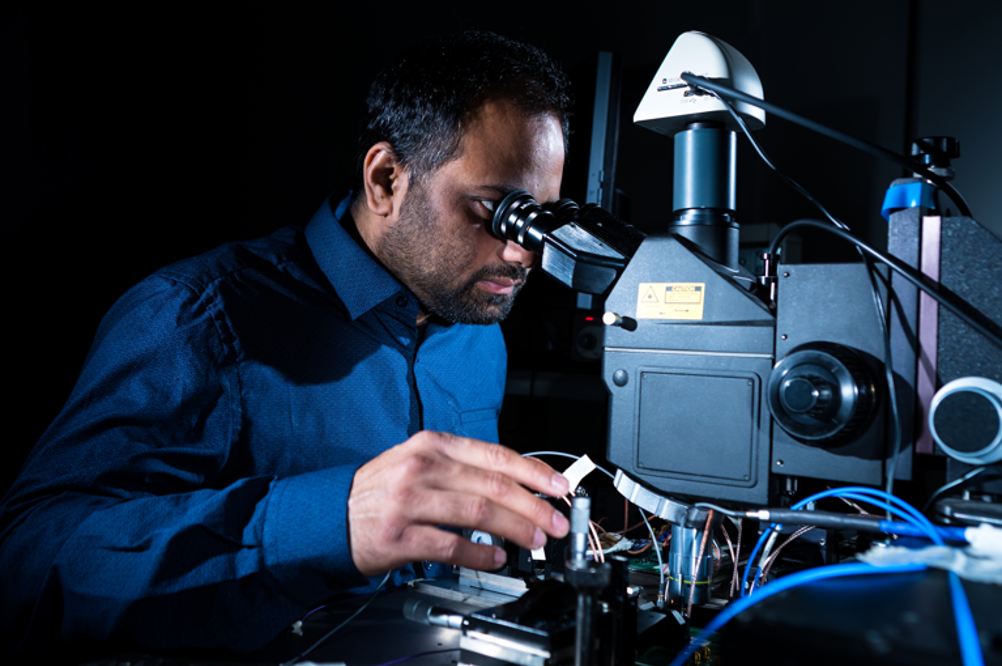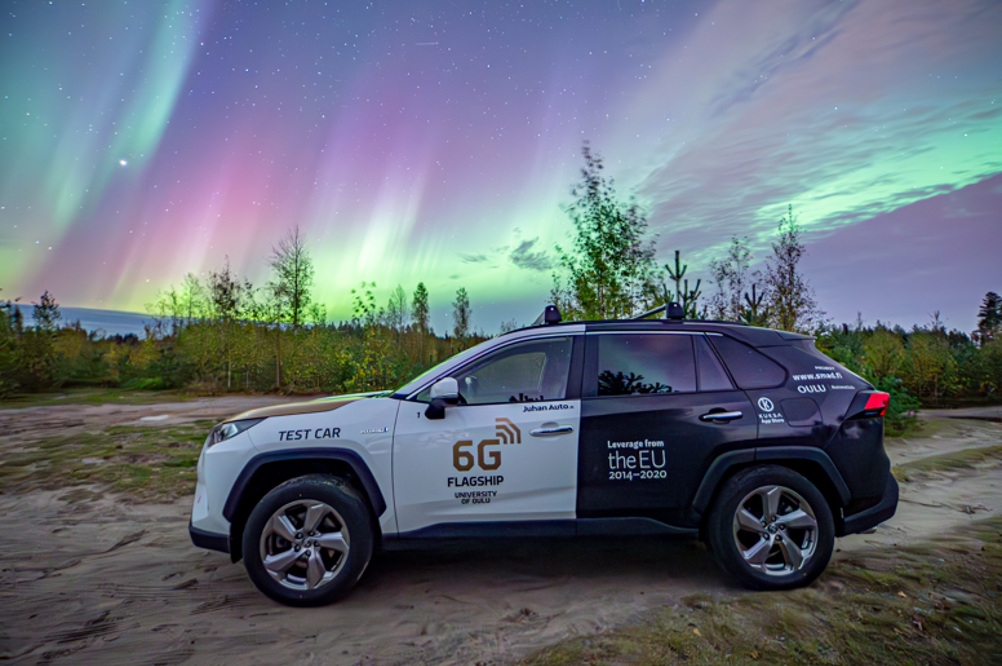It is difficult to comprehend the idea of 6G (sixth generation telecommunications) when it seems like we’re just settling into 5G, its Covid-era conspiracies and widespread mast vandalism sill fresh in the memory.
Indeed, 5G was only introduced in May 2019, with EE and Vodafone being the first to establish their networks. Today, the majority of leading network providers offer 5G, but for many, the next-gen connection remains out of range.
According to major providers, the rollout of 5G will continue, with the general aim for the network to overtake 4G in prominence by 2025. EE and Three have committed to delivering nationwide coverage by 2028.
Why, then, do we need 6G, and what exactly is it?
The Engineer was invited out to Oulu, Finland, the home of the world’s first 6G development programme, to learn how 6G differs from 5G/5G Advanced (5GA) and what the future of the next generation network may look like come the projected deployment date of 2030.
As we continue to demand more and more from our technology, at a personal as well as industrial and societal level, a stronger, more developed data network is needed, specifically in terms of processing increasingly more data at an increasingly faster speed and greater energy efficiency.
6G aims to meet this higher technological demand, as it will use higher frequencies than previous networks to provide a substantially higher capacity and lower latency.
The next generation network aims to expand on the capabilities of 5G, expanding on speed and data capacity, as well as furthering the applications and innovations regarding the Internet of Things (IoT) that 5G is beginning to establish.
According to Nokia, mid-band spectrum frequency – 1 to 6 gigahertz (GHz) – is considered “perfect for 5G, as it can carry plenty of data while travelling significant distances,” though mmWave (high-band) frequency is also used for 5G Advanced networks – 24 GHz band and higher on the spectrum chart.
Current 6G research and development is testing the network at much higher frequencies, crucially considering terahertz (THz) frequencies, which refer to frequency bands in the range of several hundred GHz to several THz. Whilst the unit of GHz is equal to one billion hertz, the measurement of one frequency cycle per second, THz refer to one trillion cycles per second.

The University of Oulu has been running its 6G Flagship since 2018, a projected eight-year programme to push the limits of higher frequency networks, with 500 plus researchers and a €300m budget behind it.
Oulu University is currently developing its 6G technology at THz frequency bands, which it claims delivers a peak data throughput of 1,000 gigabits/second, with an air latency of less than 100 microseconds.
According to the university’s researchers, when comparing 5G and 6G network speeds, 6G is predicted to be 100 times faster than 5G, with improved reliability and broader network coverage, though it was emphasised that the testing is only at the earliest stages.
The issue with increasing a network’s frequency levels, despite the unprecedented download and upload speeds, is that, based on the relation between frequency and wavelengths, the higher the frequency, the shorter the wavelengths and therefore the available distance from device to transceiver.
Although subject to ever-evolving research, Nokia estimates that 6G’s peak Sub-THz capacity, or generally frequency bands above 175GHz, could have a range of less than 10m, to a maximum of 100m.
A lesser capacity currently being tested by 5G Advanced and 6G research, of 7 – 15GHz, extends to around a 300m range from the transceiver, to accommodate within a ‘dense urban’ environment, though this is still fairly limiting. The current 5G basic mobile coverage, at 470 – 694 MHz, can extend to >3000m, into rural areas where the network is available.
So what might the future of this higher frequency and ultra-fast, but far more localised, 6G network look like?
Considering the next generation mobile network capabilities, the University of Oulu proposes that 6G can facilitate private, individual networks for campuses, hospitals, and factories, for instance.
According to Ari Pouttu, vice director of the 6G Flagship, these private networks could host countless devices from their micro-operators, ranging from mobiles to drones and cars, that are all only increasing in capabilities themselves.
Oulu University has been developing its 5G Test Network since 2018, which is localised to its campus. Researchers at the University have private sim cards for their phones to test the network daily and access the increased speeds of 5G and, eventually, 6G frequencies.
The current base station on campus operates at 3.5GHz, but Pouttu said designs for 140 and 300GHz 6G transceivers are underway, with the aim of finalising the designs in 2028.
The vision is that these localised networks could offer those that process mass amounts of data - such as manufacturers or hospitals - with the unprecedented speed and capacity that they increasingly need.
However, this need for faster data processing and greater capacity extends far beyond just mobile networks. One sector eyeing up the potential of the connectivity benefits that 6G will bring is the automotive industry.
Tommi Tallgren from software and automotive company, Elektrobit, envisions that “modern vehicles will be software-defined.”

Whilst the industry is already rapidly advancing, in terms of electric vehicles and the beginnings of self-driving cars, 6G will enable the connection speed and data processing needed for fully autonomous vehicles, smart-cockpits, and, ultimately, “all vehicles on the road connected.”
Tallgren imagines automotive connectivity in ten years time to be ‘vehicle to everything,’ including vehicle-to-cloud, vehicle-to-infrastructure, and vehicle-to-vehicle.
Similarly, near-instantaneous connectivity and data sharing is key for the healthcare industry as it looks to develop more efficient approaches to testing and treatment.
Experts envision that 6G could aid developing medical technology, such as at-home testing devices with much faster data processing and responses.
“New connectivity-based technologies form the backbone of future healthcare, which enable the Internet of Things and individual healthcare services,” said Mariella Särestöniemi, postdoctoral researcher for 6G Enabling Sustainable Society (6GESS), a multidisciplinary research programme combining medicine, 6G technology and business.
For instance, 6G can make healthcare provided electronically (eHealth) possible, by enabling “cloud computing, processing big data, as well as virtualised, private, and secure individual follow-up and treatment options.”
Särestöniemi described potentially lifesaving eHealth devices, such as a wearable breast cancer screening device and a brain tumour detection application, placed on the head to scan the tissue using micro-waves, which would be disrupted if a tumour was present.
“These future wireless intelligent devices,” said Särestöniemi, “could be reliable and cost-effective solutions for hospitals,” but only with 6G. The higher frequency and capacity of the network would mean mass amounts of data could be transported to hospitals quickly, for analysis and response.
It would be remiss to envision the future of 6G without considering the network’s underpinning, and indeed rapidly developing, technology of AI. As 6G will be able to comprise many connected devices and systems, AI will be essential in optimising this complex network performance.
“Future data-intensive applications will require distributed AI and data analytics solutions deployed on edge and fog computing platforms across the 6G network,” said Miguel Bordallo López, professor in Computer Vision, Digital Health, and Application Verticals, Oulu University.
“The assistance of AI will augment human decision processes and develop autonomous systems, from small devices to complete factories – autonomous systems that never sleep.”
AI-powered 6G networks are set to reshape all of our devices’ digital interactions, making hyperconnectivity and immersive daily experiences a reality for us as consumers by integrating our digital and physical realms.
For instance, the already rising field of extended reality (XR) is expected to develop even further with the support of AI and the 6G network. For instance, Dispelix, a Finland-based technology company, envisions its XR eyewear becoming a staple in future daily life, with 6G capabilities supporting the data processing and instantaneous AI response its smart lenses need.
Dispelix waveguide lenses deliver bright, sharp, full-colour virtual content that merges the virtual and the real, so that users can experience AI assistance, such as reminders and projected images, in their everyday glasses. Again, the company said that 6G will unlock the full potential of this technology.
Looking beyond XR wearable glasses, Bordallo López believes that 6G could ultimately help make all-connected ‘smart cities’ a reality.
“Imagine a world where everything is sensing, connected, autonomous, multi-modal, personalised and bio-integrated,” he said. “We could have a cyberspace where digitalisation of all the information attached to our physical world is represented, where data transfer and storage capabilities are able to ‘follow’ you where you go.”
The vision is that all of our devices - ranging from our personal phones, cars and homes, to the public cameras, street-lights and offices - could all communicate to autonomise our reality.
Imagine a road where all cars can communicate with one another, alleviating the risk of accidents or congestion, or where your phone can communicate to your home to ‘activate’ it just before you arrive.
“This is beyond fusion,” said Bordallo López, “this is taking unprecedented capabilities, and transforming interactions between fields.”
Of course, this vision sits far in the distant future, but as the network of 6G develops, and the capabilities of AI continue to grow, so does the likelihood of this becoming a reality for generations to come.
“Ultimately, it is not clear yet what 6G will entail. It will include relevant technologies considered too immature for 5G or which are outside the defined scope of 5G.
“More specifically, the way in which data is collected, processed, transmitted and consumed within the wireless network will be a key driver for 6G,” said Oulu University researchers, in their 6G White Paper, ‘Key drivers and research challenges for 6G ubiquitous wireless intelligence.’
“Now is the perfect time to identify future communication needs, performance requirements, system and radio challenges, and major technical options for 6G to establish the research goals towards the 2030s.”
6G may offer a whole host of advanced technology, supporting the advancement of autonomous cars, eHealth devices, smarter AI, and even software-driven, all-connected cities, but experts remind us that the network is still only in its initial stages of development.
Meanwhile, looking even further ahead, researchers are already in the early stages of 7G (Seventh Generation) network development. Though not expected to roll out until the mid-2030s at the earliest, 7G technology will push further into the THz spectrum, potentially supported by next generation communications satellites or even high altitude platform systems (HAPS, see the page 16 feature). What’s certain is that technology, like time, marches forward, and humanity’s demand for ever greater networking capabilities shows no signs of slowing down.
More from The Engineer on 6G
- AI and 6G technologies developed for safe interconnected mobility
- Collaboration makes UK's first 100Gbps 6G sub-THz connection
- Sheffield University to host UK’s first national 6G research facility
- Lancaster University to develop E-band travelling wave tubes for 5G and 6G data transmission for satellites











Invinity to build 20MWh flow battery in UK
Redux flow cells have had nowhere near the R+D effort compared to Lithium ion. They certainly have the potential (pun not intended) for longer...